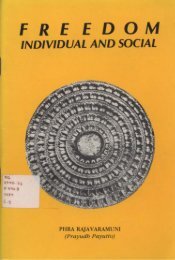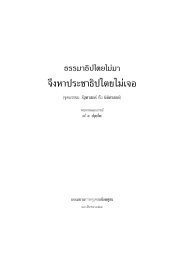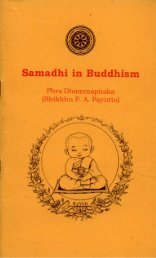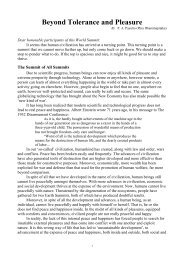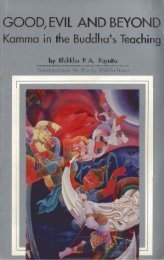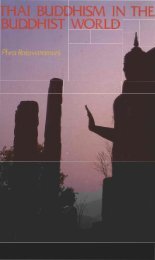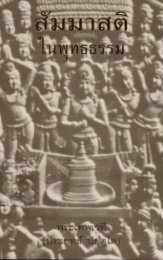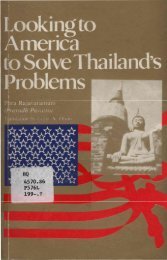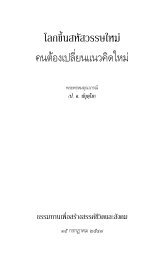The Iconography of Nepalese Buddhism
Create successful ePaper yourself
Turn your PDF publications into a flip-book with our unique Google optimized e-Paper software.
forms. In Tantric Buddhist tradition this mental body in the<br />
intermediate state is utilized for realization <strong>of</strong> illusory body<br />
and then Mahamudra.<br />
B.1.3 Nirmanakaya<br />
We have already said that an enlightened being has two<br />
bodies: Sambhogakaya and Nirmanakaya. Sambhogakaya<br />
Buddha usually resides only in a pure Buddha field. Nirmanakaya<br />
Buddha assumes innumerable forms or transform<br />
bodies according to the circumstances and attitudes <strong>of</strong> the<br />
sentient being to be converted or tamed. It is said in Prajna<br />
Sutra that one who practises the perfection <strong>of</strong> wisdom attains<br />
the supreme enlightenment and emanates many transformed<br />
bodies to suit the varying degrees <strong>of</strong> intelligence in ten different<br />
direction to convert the stubborn beings in the path <strong>of</strong> the<br />
dharma. is emanation body is <strong>of</strong> many kinds.<br />
One such Nirmanakaya is called Supreme Nirmanakaya.<br />
e supreme Nirmanakaya is the body <strong>of</strong> Buddha having<br />
32 marks and 80 minor marks. He is born as a human being<br />
and performs 12 principal deeds <strong>of</strong> the Buddha such as birth,<br />
display <strong>of</strong> skill in arts, marriage, renunciation, austerities, attainment<br />
<strong>of</strong> the Buddhahood, turning the wheel <strong>of</strong> dharma<br />
and his final passing away, etc. During the Buddha’s historic<br />
career innumerable beings were liberated through his skill in<br />
means <strong>of</strong> 12 principal deeds. e Buddha like Dipamkara,<br />
seven Buddhas, etc. are supreme Nirmanakaya.<br />
33



